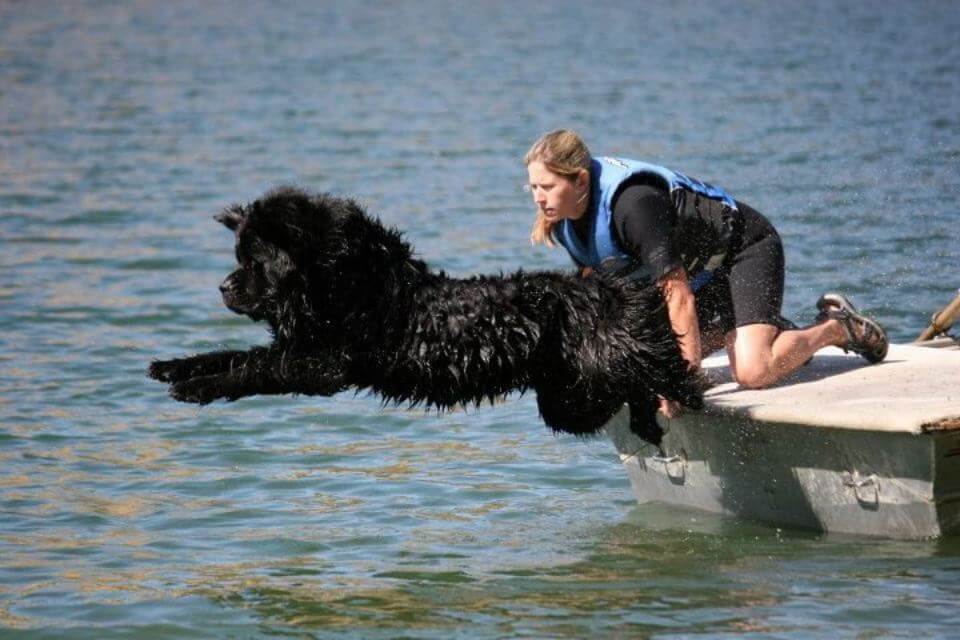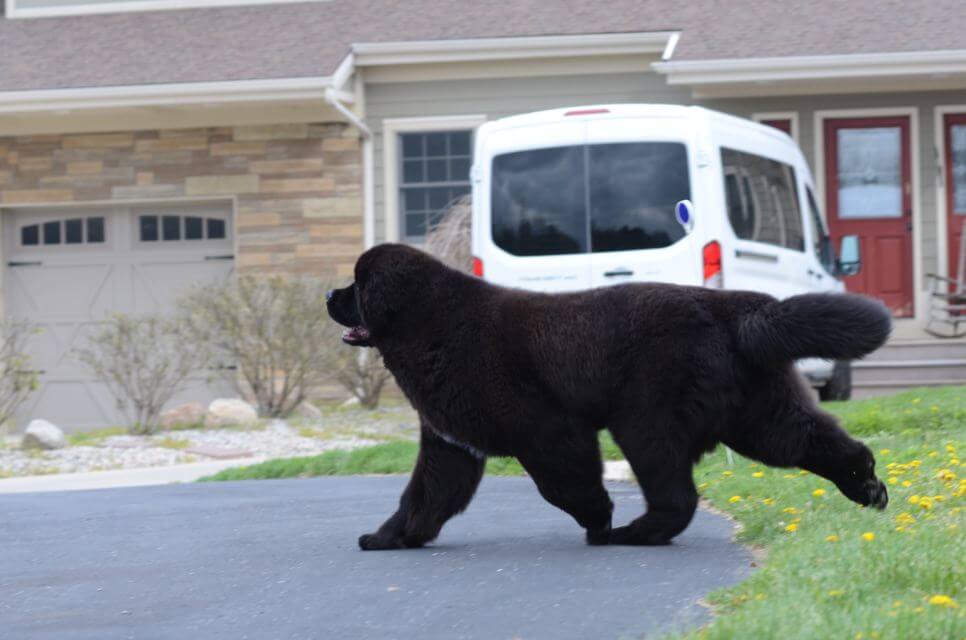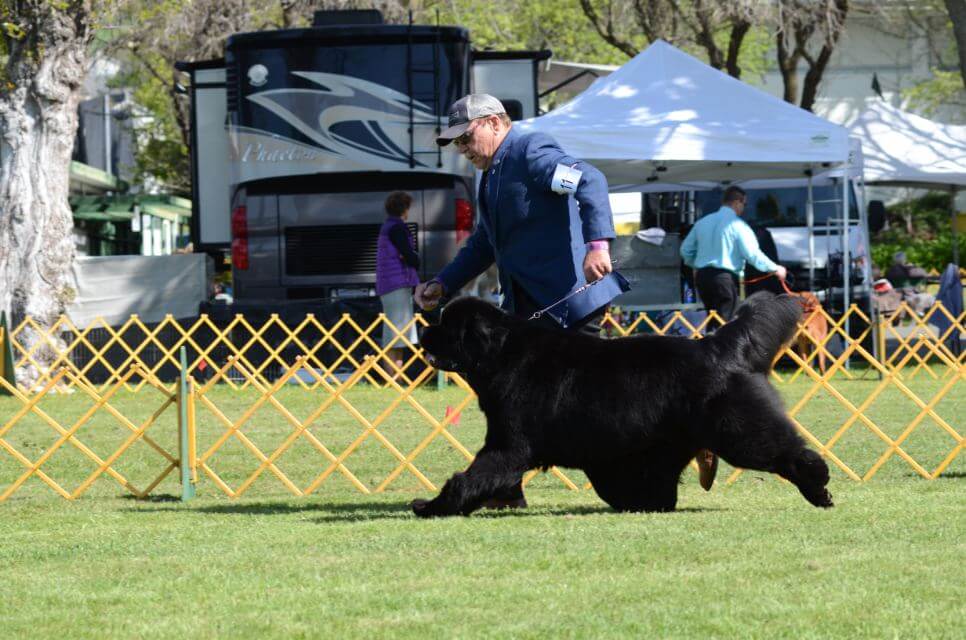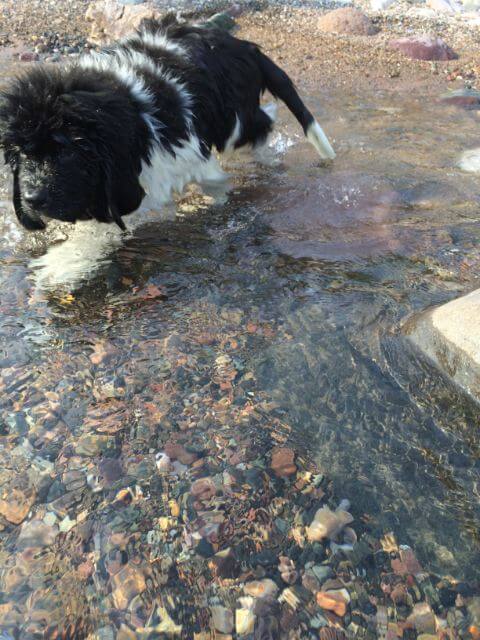
Home » The Newfoundland

This article was originally published in Showsight Magazine, July 2017 issue.
We have been asked to write about the Newfoundland Dog. My name is Kim Griffith, Owner, Breeder, and Handler of Newfoundlands for over 50 years. My wife and best friend, Gigi, has lived with the Newfoundland for nearly 40 years. I am a member of the Newfoundland Judges Education committee, and we are both mentors. This breed is dear to our hearts, and our experience in the breed is both in working events and in conformation. The Newfoundland is first and foremost a “people” dog. These dogs love to rest or work beside their owners. They are great caregivers and nurturers of the small and the weak.

They are also a strong, powerful working dog, with events such as Water Rescue and Drafting being a part of the parent club’s activities. Their early history as fishing boat dogs in Newfoundland shows them towing boats or taking a line from a boat to someone on shore to bring the boat in through rocky shoals. They also have an innate lifesaving instinct and are today trained to dive off of boats and pull someone in, and history states that this was one of the other reasons they were taken on the fishing boats, despite their great size. Anyone who has a Newfoundland dog around the water knows that your dog does not think you can swim and will swim with or watch you tirelessly. And if you have young children, without training, they will often be frantic and jump in after the child or swim around them the entire time. These dogs are athletes and must be well balanced.

They should move forward with ease and agility. To carry out their work, they are large, double-coated dogs with large bones, strong feet, and built to the Standard. I could repeat the Standard, but I won’t—everyone can read it, but it’s more important to understand the purpose of the Standard. A dog without the correct angulation in the front cannot take strong, powerful strokes in the water, and a dog without strong pasterns and good feet cannot pull carts over terrain for any length of time without breaking down. The double coat and texture are important as they were bred to swim in frigid Northern waters, with the insulation of the proper undercoat to keep them warm. The right texture of both serves to shed the water as opposed to getting more soaked and weighing the dog down.

This is an amazing dog to watch doing its work, and that power, strength, and conditioning should reflect in the show ring. The Newfoundland Dog is also a soft dog. Its expression should invite you in. The eyes are dark and almond-shaped, set into a headpiece with broad cheeks and muzzle. If you’ve known a Newfoundland or two, this soft expression and expressiveness of the dog is part of its calling as a “Gentle Giant.” It’s also true in the Newfoundland nature. These are not aggressive dogs, but they will protect in their gentle way by putting themselves between you and danger. A story was told about a young child and a bike.

A couple of young bullies took the bike away from the child. The “sleeping” Newf on the porch got up and put himself in front of the bike, and the bullies ran away. The child remounted his bike and the Newf went back to his spot on the porch. Now had more been needed, the next step would have been to knock the bully down, and if needed, to stand on them, but the last choice would have been to bite! For these reasons and many more, the Newfoundland dog is a cherished friend and companion. Yes, he needs to be protected from heat. Yes, there is a coat that needs to be maintained, but all in all, this is a dog that makes his way into your heart and stays there.